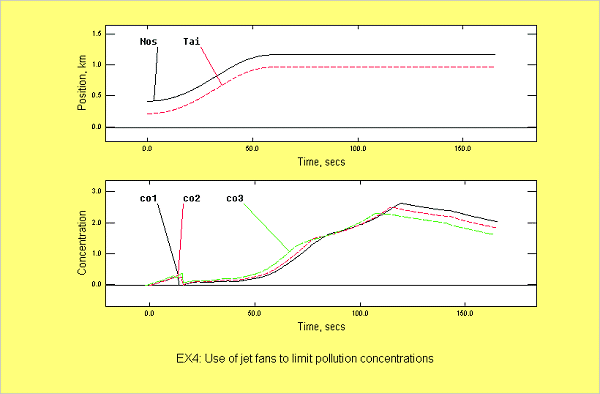Example 4: Use of Jet Fans to Limit Pollution Concentrations

Successive stations in an underground railway are linked by 800 m long tunnels. Each station has a simple opening to atmosphere. For illustrative simplicity, the resistances of the remote parts of the system are approximated by outer boundary conditions that prevent wave reflections.
A train accelerates from rest in one station and then travels at constant speed before slowing to a halt upstream of the next station. Two types of pollution are emitted continuously from the rear of the first coach of the train throughout the journey. Additionally, one of these types begins to emit continuously from the front of the last coach, beginning 30 s after the train begins to accelerate. One (or both) of these pollutants could be smoke, for instance.
Half a minute after the train stops, jet fans are activated to prevent the air velocity falling too low. In the long term, this will have the effect of reducing concentrations of the pollutants alongside the train.
In normal travel, the direction of airflow relative to the train is rearwards so air behind the first coach becomes polluted. After the train stops, the already-polluted air moves faster than the train and it becomes further polluted when it moves past the source for a second time.
The graphs in the upper box show the paths of the nose and tail of the train. Those in the lower box show concentrations at the fronts of the first three coaches.

